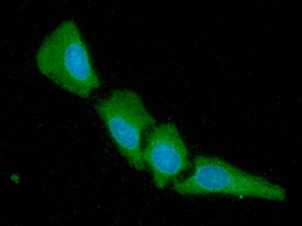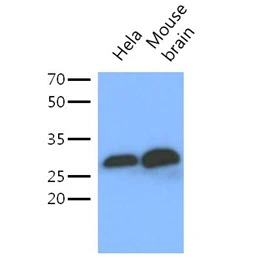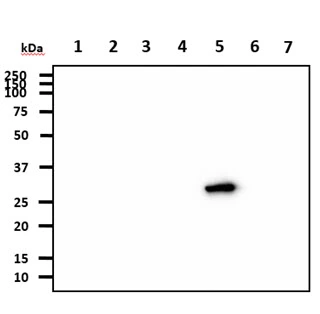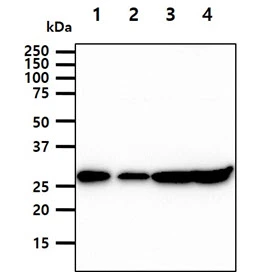
ICC/IF analysis of HeLa cells using GTX57599 14-3-3 gamma antibody. Blue: DAPI Green: Primary antibody Dilution: 1:100
14-3-3 gamma antibody [AT4B9]
GTX57599
ApplicationsImmunoFluorescence, Western Blot, ImmunoCytoChemistry
Product group Antibodies
ReactivityHuman, Mouse
TargetYWHAG
Overview
- SupplierGeneTex
- Product Name14-3-3 gamma antibody [AT4B9]
- Delivery Days Customer9
- Antibody SpecificityBased on internal testing result, this antibody does not cross react with human YWHAZ, human YWHAB, human YWHAE, human YWHAH, human SFN, and human YWHAQ.
- Application Supplier NoteWB: Recommended starting dilution is 1:1000.. *Optimal dilutions/concentrations should be determined by the researcher.Not tested in other applications.
- ApplicationsImmunoFluorescence, Western Blot, ImmunoCytoChemistry
- CertificationResearch Use Only
- ClonalityMonoclonal
- Clone IDAT4B9
- Concentration1 mg/ml
- ConjugateUnconjugated
- Gene ID7532
- Target nameYWHAG
- Target descriptiontyrosine 3-monooxygenase/tryptophan 5-monooxygenase activation protein gamma
- Target synonyms14-3-3 protein gamma; 14-3-3GAMMA; DEE56; EIEE56; KCIP-1; PPP1R170; protein kinase C inhibitor protein 1; protein phosphatase 1, regulatory subunit 170; tyrosine 3-monooxygenase/tryptophan 5-monooxygenase activation protein, gamma polypeptide
- HostMouse
- IsotypeIgG1
- Scientific DescriptionThis gene product belongs to the 14-3-3 family of proteins which mediate signal transduction by binding to phosphoserine-containing proteins. This highly conserved protein family is found in both plants and mammals, and this protein is 100% identical to the rat ortholog. It is induced by growth factors in human vascular smooth muscle cells, and is also highly expressed in skeletal and heart muscles, suggesting an important role for this protein in muscle tissue. It has been shown to interact with RAF1 and protein kinase C, proteins involved in various signal transduction pathways. [provided by RefSeq, Jul 2008]
- ReactivityHuman, Mouse
- Storage Instruction-20°C or -80°C,2°C to 8°C
- UNSPSC12352203



